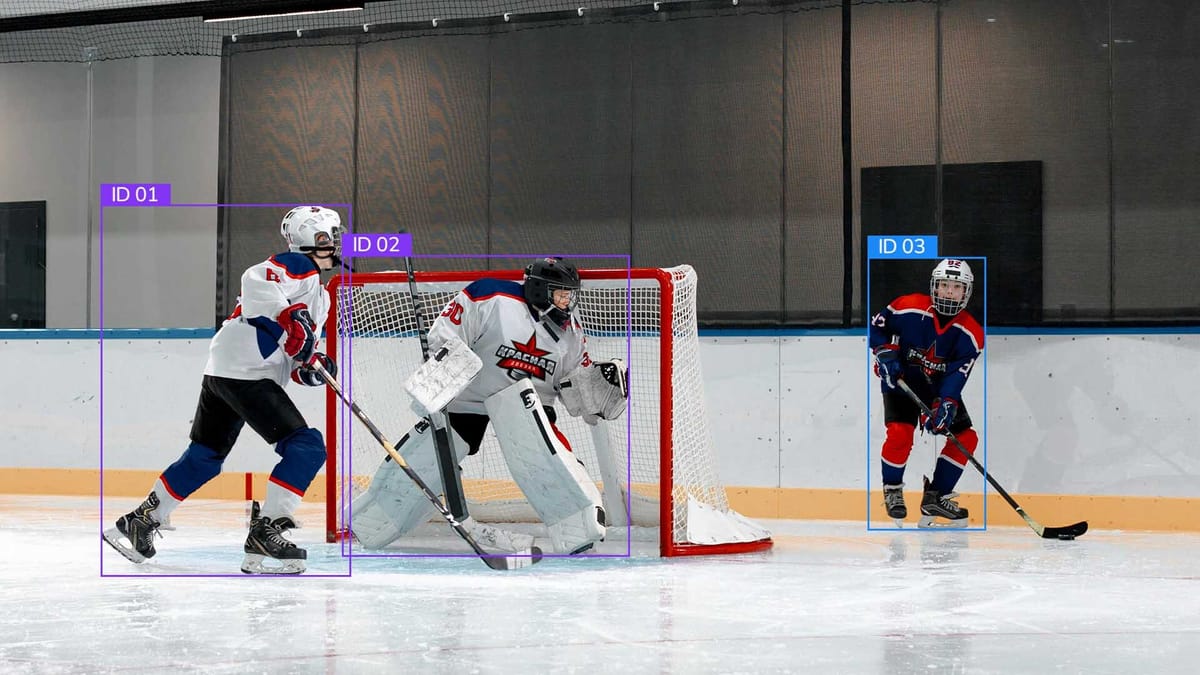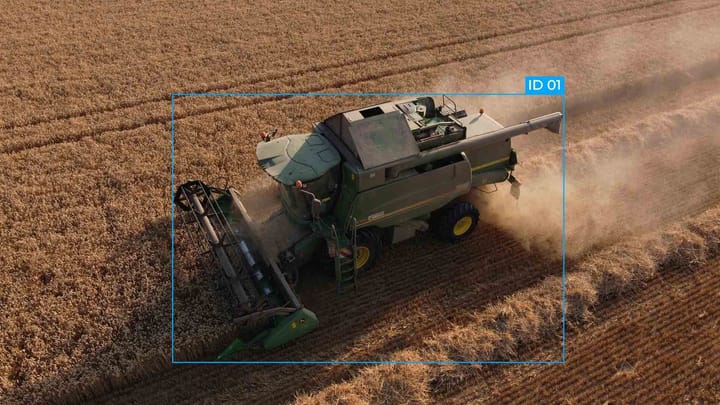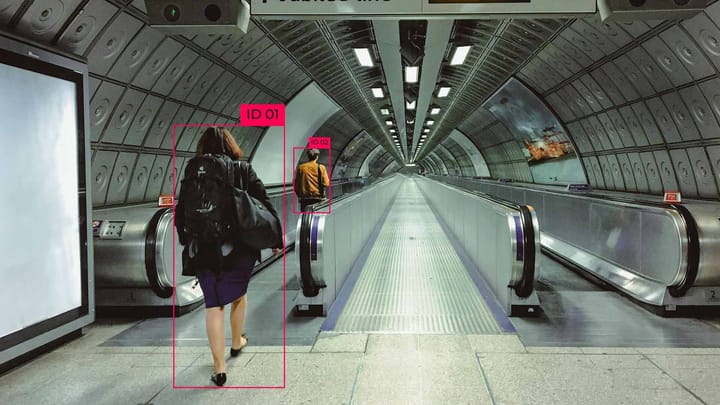Applications of YOLOv10 in Object Detection

YOLOv10 introduces several groundbreaking features. Its NMS-free training strategy and consistent dual assignments streamline the inference process. These innovations lead to a reduction in latency, facilitating quicker real-time object detection. The model incorporates large-kernel convolutions and partial self-attention modules, boosting performance while keeping computational demands manageable.
YOLOv10's advancements are versatile, fitting a broad spectrum of applications. In autonomous vehicles, it ensures rapid obstacle detection. For surveillance systems, it enhances real-time monitoring capabilities. The healthcare sector benefits from its precise and swift object recognition in medical imaging. Retail environments leverage YOLOv10 for inventory management and customer behavior analysis.
Key Takeaways
- YOLOv10 eliminates NMS during training, reducing latency
- Incorporates large-kernel convolutions and partial self-attention modules
- Offers superior accuracy and efficiency for various computer vision tasks
- Introduces consistent dual assignments for NMS-free training
- Achieves state-of-the-art performance on the COCO dataset
- Outperforms previous YOLO models in computational cost and accuracy
- Suitable for applications in autonomous vehicles, surveillance, healthcare, and retail
Introduction to YOLOv10: The Latest Advancement in Object Detection
YOLOv10 represents a major breakthrough in real-time object detection, significantly enhancing the YOLO evolution. It offers improved speed and accuracy across various applications. This model comes in sizes from Nano to X-Large, meeting the needs of different computer vision tasks.
Evolution of YOLO Models
The YOLO family has seen substantial growth since its beginning. YOLOv10 is notable for its outstanding performance. For example, YOLOv10-S is 1.8 times faster than RT-DETR-R18 on COCO, yet uses 2.8 times fewer parameters and FLOPs. YOLOv10-B also shows a 46% latency reduction over YOLOv9-C, while maintaining performance.
Key Features of YOLOv10
YOLOv10 introduces several groundbreaking features to enhance its object detection capabilities:
- NMS-Free training strategy
- Consistent dual assignments for optimized speed and accuracy
- Lightweight classification head
- Spatial-channel decoupled downsampling
- Large kernel convolutions for improved accuracy
Importance in Computer Vision
YOLOv10's advancements are vital for real-time inference in computer vision. Its efficiency and accuracy improvements are crucial for applications like autonomous driving, robotics, and surveillance. With its ability to balance speed and precision, YOLOv10 is poised to expand the capabilities of object detection models in practical scenarios.
Understanding the Architecture of YOLOv10
YOLOv10 architecture marks a significant leap in object detection technology. It leverages the strengths of its predecessors and introduces new features to boost performance and efficiency.
At its core, YOLOv10 utilizes a backbone network for extracting features. This is followed by a neck that connects the backbone to the head. The head is tasked with classification and bounding box prediction. This setup is the cornerstone of the YOLOv10 object detection pipeline.
YOLOv10 stands out with its convolutional neural networks. These networks are enhanced through large-kernel convolutions and partial self-attention modules. Additionally, a lightweight classification head is used, which reduces computational load without compromising performance.
The model introduces a groundbreaking NMS-free training strategy. This method employs dual label assignments and a consistent matching metric, making non-maximum suppression unnecessary during inference. This leads to faster prediction times and enhanced efficiency in real-time object detection.
| Model | APval (%) | Latency (ms) | Parameters (M) | FLOPs (B) |
|---|---|---|---|---|
| YOLOv10-N | 38.5 | 1.84 | 2.3 | 6.7 |
| YOLOv10-L | 53.2 | 7.28 | 24.4 | 85.7 |
| YOLOv10-X | 54.4 | 10.70 | 29.5 | 160.4 |
The YOLOv10 architecture delivers outstanding results across various model sizes. From the compact YOLOv10-N to the robust YOLOv10-X, each variant balances accuracy with computational efficiency. This makes it ideal for a wide range of applications in computer vision.
YOLOv10 in Object Detection: A Game-Changer for Real-Time Applications
YOLOv10 represents a major breakthrough in real-time object detection, transforming the landscape with its cutting-edge advancements. This version offers substantial enhancements in both speed and efficiency, establishing new standards for detecting objects in real-time.
NMS-Free Training Strategy
YOLOv10's NMS-Free training strategy is a key highlight. By skipping Non-Maximum Suppression during processing, it cuts down on computational load and latency. This approach ensures high precision while simplifying the detection process, making it perfect for applications needing real-time performance.
Consistent Dual Assignments
YOLOv10 introduces a novel concept of consistent dual assignments. It allows for multiple predictions on a single object, all with confidence scores. This feature boosts inference speed without sacrificing accuracy, enhancing the model's efficiency and performance.
Improved Performance Metrics
The performance metrics of YOLOv10 are nothing short of stellar. Here are some key figures:
| Model | Average Precision (AP) | Latency (ms) |
|---|---|---|
| YOLOv10-S | 46.3 | 2.49 |
| YOLOv10-M | 51.1 | 4.74 |
| YOLOv10-L | 53.2 | 7.28 |
| YOLOv10-X | 54.4 | 10.70 |
YOLOv10-S surpasses its rivals, offering 1.8 times the speed of RT-DETR-R18 while matching AP on the COCO dataset. YOLOv10-B, a balanced variant, shows a 46% latency cut and 25% fewer parameters than YOLOv9-C, without losing precision.
With its NMS-Free training, consistent dual assignments, and superior performance metrics, YOLOv10 is a paradigm shift for real-time object detection across diverse sectors.
Comparing YOLOv10 with Previous YOLO Versions
YOLOv10 marks a significant advancement in object detection technology. It surpasses its predecessors in accuracy, efficiency, and speed. This latest version stands out on object detection benchmarks.
The YOLOv10 model offers various sizes, each tailored for different needs. From the compact YOLOv10-N to the powerful YOLOv10-X, these models meet diverse application requirements.
| Model | AP | FLOPs (B) | Latency (ms) |
|---|---|---|---|
| YOLOv10-N | 38.5 | 6.7 | 1.84 |
| YOLOv10-S | 46.3 | 21.6 | 2.49 |
| YOLOv10-M | 51.1 | 59.1 | 4.74 |
| YOLOv10-L | 53.2 | 120.3 | 7.28 |
| YOLOv10-X | 54.4 | 160.4 | 10.70 |
YOLOv10 shows significant improvements over its predecessors. YOLOv10-S has a 1.4% AP boost, using 36% fewer parameters and reducing latency by 65% compared to YOLOv6-3.0-S. Larger models like YOLOv10-L and YOLOv10-X outperform YOLOv8-L and YOLOv8-X in AP, with reduced parameters and latency.
YOLOv10's advancements go beyond just performance. It eliminates the need for Non-maximum suppression (NMS) through NMS-Free training, enhancing efficiency and accuracy. The model also uses dual-label assignment and a consistent matching metric, improving performance further.
In practical applications, YOLOv10 excels. YOLOv10-S is 1.8 times faster than RT-DETR-R18, yet maintains similar AP on the COCO dataset. This speed makes it ideal for real-time object detection in areas like autonomous driving, surveillance, and robotics.
The evolution from YOLOv1 to YOLOv10 reflects a decade of progress in object detection. Each version has introduced architectural improvements, training strategies, and optimization techniques. YOLOv10 represents the culmination of this journey, offering unmatched performance in computer vision tasks.
Key Innovations Driving YOLOv10's Performance
YOLOv10 introduces groundbreaking innovations in object detection. These advancements enhance model performance and efficiency across various scales and applications.
Lightweight Classification Head
YOLOv10 features a lightweight classification head, utilizing depthwise separable convolutions. This innovation significantly reduces computational demands while preserving accuracy. The design facilitates faster processing, enabling real-time object detection.
Spatial-Channel Decoupled Downsampling
The model employs spatial-channel decoupled downsampling for efficient image resizing. This technique boosts YOLOv10's ability to handle diverse object scales, enhancing detection accuracy for both small and large objects.
Rank-Guided Block Design
YOLOv10 incorporates a rank-guided block design for adaptive block allocation. This innovation optimizes parameter usage, ensuring the model focuses on the most critical areas. The result is improved overall performance without an unnecessary computational burden.
Large Kernel Convolutions
The model utilizes large kernel convolutions at deeper stages. This approach enhances feature extraction capabilities, leading to more accurate object detection. YOLOv10's application of large kernels significantly contributes to its state-of-the-art performance on benchmarks like COCO.
| Innovation | Benefit | Impact on Performance |
|---|---|---|
| Lightweight Classification Head | Reduced Computational Load | Faster Processing Speed |
| Spatial-Channel Decoupled Downsampling | Improved Scale Handling | Enhanced Detection Accuracy |
| Rank-Guided Block Design | Optimized Parameter Usage | Better Resource Allocation |
| Large Kernel Convolutions | Enhanced Feature Extraction | Increased Detection Precision |
These YOLOv10 innovations collectively drive significant improvements in object detection and model optimization. The result is a powerful tool that surpasses its predecessors in both speed and accuracy.
YOLOv10 Variants: Choosing the Right Model for Your Needs
YOLOv10 presents a spectrum of model variants tailored for varied computational capacities and object detection applications. Spanning from the diminutive Nano to the robust Extra Large, each variant harmonizes performance with efficiency uniquely.
- Nano (n): 2.3 million parameters
- Small (s): 7.2 million parameters
- Medium (m): 15.4 million parameters
- Big (b): 19.1 million parameters
- Large (l): 24.4 million parameters
- Extra Large (x): 29.5 million parameters
The choice of YOLOv10 variant hinges on your specific requirements and the computational resources at your disposal. For edge devices with limited processing capabilities, the Nano variant excels, processing images at a staggering 1000 frames per second. This makes it perfect for real-time video analysis.
The Small variant, meanwhile, delivers a notable performance enhancement, outperforming RT-DETR-R18 by 1.8 times while retaining similar accuracy levels. For applications requiring more robust processing, the Large variant eclipses YOLOv8-L in precision with fewer parameters, underscoring YOLOv10's efficiency.
YOLOv10's architectural advancements, such as a streamlined classification head and spatial channel downsampling, significantly contribute to its speed. The model's efficiency is evident, with image preprocessing clocking in at 2.0ms, inference at 13.4ms, and post-processing at 1.3ms at a resolution of (1, 3, 384, 640).
By selecting the optimal YOLOv10 variant, you can tailor your object detection deployment for either speed, accuracy, or a harmonious blend of both. This flexibility ensures your project's specific needs and the available computational resources are met effectively.
Implementing YOLOv10 for Image and Video Object Detection
YOLOv10 implementation elevates object detection to unprecedented levels. This guide will navigate you through the setup of your environment and the utilization of object detection code for processing images and videos.
Setting up the Environment
To initiate YOLOv10, you must install the required libraries:
- OpenCV for managing images and videos
- Ultralytics for the YOLO framework
- PyTorch for deep learning tasks
Install these packages via pip in your Python environment.
Code Examples for Image Detection
Below is a fundamental script for detecting objects in images using YOLOv10:
import cv2
from ultralytics import YOLO
model = YOLO('yolov10.pt')
image = cv2.imread('image.jpg')
results = model(image)
results[0].plot()
cv2.imshow('YOLOv10 Detection', image)
cv2.waitKey(0)
This script loads the YOLOv10 model, processes an image, and displays the results with bounding boxes.
Video Object Detection Implementation
For video processing, real-time handling of frames is essential:
import cv2
from ultralytics import YOLO
model = YOLO('yolov10.pt')
cap = cv2.VideoCapture('video.mp4')
while cap.isOpened():
success, frame = cap.read()
if success:
results = model(frame)
annotated_frame = results[0].plot()
cv2.imshow('YOLOv10 Detection', annotated_frame)
if cv2.waitKey(1) & 0xFF == ord('q'):
break
else:
break
cap.release()
cv2.destroyAllWindows()
This script applies YOLOv10 to each video frame, facilitating real-time object detection.
YOLOv10 presents six model variants, ranging from YOLOv10-N (Nano) to YOLOv10-X (Extra-large). These models cater to varying computational needs and accuracy requirements. Select the appropriate model for your project's demands regarding speed and precision in object detection tasks.
Real-World Applications of YOLOv10
YOLOv10, introduced in May 2024, represents a major advancement in real-time object detection. Its sophisticated architecture and efficiency position it as a top choice for various computer vision applications across industries.
In the automotive sector, YOLOv10 stands out in autonomous vehicles. It excels at detecting obstacles, vehicles, and pedestrians in real-time, essential for safe navigation. Its performance is remarkable, offering 37% to 70% shorter latencies than other models, ensuring swift responses in complex traffic scenarios.
Security systems significantly benefit from YOLOv10's capabilities. It is employed in surveillance networks for precise monitoring and detecting unusual activities. The model's real-time video processing capability is crucial for ensuring public safety.
In healthcare, YOLOv10 demonstrates its value. It aids in diagnostic and imaging procedures, enabling medical professionals to identify anomalies swiftly and accurately. The model's enhanced Average Precision by 1.2% to 1.4% with fewer parameters ensures more dependable diagnoses.
Retailers utilize YOLOv10 for analyzing customer behavior and managing inventory. Its efficiency in processing visual data optimizes store layouts and tracks stock levels in real-time. The model's variants, including YOLOv10-N and YOLOv10-S, cater to various retail settings.
In robotics, YOLOv10 improves environmental interaction. Robots equipped with this technology navigate complex environments more effectively, accurately recognizing objects and obstacles. This application is crucial in industrial and smart home settings.
| Industry | YOLOv10 Application | Key Benefit |
|---|---|---|
| Automotive | Obstacle and pedestrian detection | 37-70% faster response time |
| Security | Real-time surveillance | Improved anomaly detection |
| Healthcare | Diagnostic imaging support | 1.2-1.4% increase in accuracy |
| Retail | Customer behavior analysis | Optimized store layouts |
| Robotics | Environmental interaction | Enhanced navigation in complex spaces |
Overcoming Challenges in Object Detection with YOLOv10
YOLOv10 addresses major object detection challenges with groundbreaking solutions. This version significantly enhances the YOLO framework, tackling common hurdles in real-world scenarios.
Handling Small Objects
Small object detection has long been a hurdle in computer vision. YOLOv10 employs feature pyramids and multi-scale training to improve its capability to spot tiny objects. This method enables the model to capture detailed features, enhancing accuracy for small items.
Improving Localization Accuracy
YOLOv10's optimization aims to boost localization precision. It utilizes consistent dual assignments and a refined matching metric. These strategies lead to more accurate bounding box predictions, cutting down errors in object placement in images.
Balancing Speed and Precision
One major challenge in object detection is ensuring high accuracy without slowing down. YOLOv10 strikes a balance through:
- Optimized model architecture
- Lightweight components
- Efficient training strategies
These enhancements make YOLOv10 ideal for real-time use while keeping detection accuracy high. The model swiftly processes images, identifying objects of various sizes and orientations with precision.
However, challenges persist. YOLOv10 may face difficulties in unique scenarios due to limited training data. Occlusions and extreme pose variations can also impact its performance. Ongoing research strives to overcome these hurdles, advancing object detection technology.
Future Prospects: YOLOv10 and Beyond
YOLOv10 represents a major advancement in object detection, heralding a new era in computer vision. This 10th version of the YOLO model reflects the swift progress in the field. It focuses on boosting inference speed and efficiency, making it ideal for real-time applications.
The future of YOLO models appears promising. YOLOv10's breakthroughs, such as dual label assignments and spatial-channel decoupled downsampling, hint at future enhancements. Expect to see further optimizations for edge devices, enabling sophisticated object detection on smartphones and IoT devices.
Integrating object detection with emerging technologies is another area of excitement. Retail environments adopting YOLOv10 will likely lead to more personalized shopping experiences and automated inventory management. These innovations could transform how we shop, from tailored product suggestions to seamless checkout processes.
Despite challenges like data privacy and the need for quality training data, the potential of object detection is vast. As YOLO models advance, they will likely be pivotal in shaping the future of computer vision. They will enhance augmented reality, improve autonomous vehicles, and more.
FAQ
What are the key features of YOLOv10?
YOLOv10 brings several groundbreaking features to the table. These include NMS-Free training, consistent dual assignments, and a holistic model design. These innovations streamline the inference process, significantly reducing latency. This makes real-time object detection faster and more efficient.
How does YOLOv10 compare to previous YOLO versions?
YOLOv10 surpasses its predecessors in accuracy, efficiency, and speed. It achieves higher average precision (AP) than YOLOv8, with fewer parameters and lower latency across all model sizes. For instance, YOLOv10-L outperforms GoldYOLO-L by 1.4% AP, with 68% fewer parameters and 32% less latency.
What are the key innovations driving YOLOv10's performance?
Several innovations boost YOLOv10's performance. It features a lightweight classification head using depthwise separable convolutions. Spatial-channel decoupled downsampling ensures efficient image resizing. Additionally, rank-guided block design allows for adaptive block allocation, and large kernel convolutions enhance performance at deeper stages.
What are the different YOLOv10 variants, and how do I choose the right one?
YOLOv10 offers various variants tailored to different computational resources and applications. These include YOLOv10-N (Nano), YOLOv10-S (Small), YOLOv10-M (Medium), YOLOv10-L (Large), and YOLOv10-X (Extra Large). Select the variant that best balances performance, model size, and computational requirements for your specific use case and hardware constraints.
How can I implement YOLOv10 for image and video object detection?
To implement YOLOv10 for object detection, set up your environment with OpenCV and Ultralytics. For images, use the YOLO model to predict and detect objects, then visualize the results. For videos, process frames individually for real-time performance.
What real-world applications can benefit from YOLOv10?
YOLOv10 has numerous applications across various domains. It supports real-time obstacle, vehicle, and pedestrian detection in autonomous vehicles. It enhances surveillance systems by monitoring and detecting unusual activities. Additionally, it aids in healthcare, retail, and robotics for more efficient environmental interaction.
How does YOLOv10 address common object detection challenges?
YOLOv10 tackles common object detection challenges effectively. It excels in detecting small objects through feature pyramids and multi-scale training. The model's localization accuracy is improved with consistent dual assignments and a refined matching metric. Furthermore, it balances speed and precision by optimizing the model architecture and employing efficient training strategies.
What are the future prospects for YOLOv10 and object detection advancements?
YOLOv10 marks a new era in real-time object detection, opening doors for future advancements. Potential areas for improvement include optimizing for edge devices, integrating with natural language processing, and adapting to specialized domains. The success of YOLOv10 indicates ongoing evolution in the YOLO family, with future versions likely to focus on efficiency, accuracy, and versatility in object detection tasks.



Comments ()